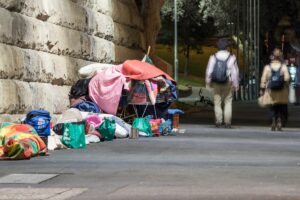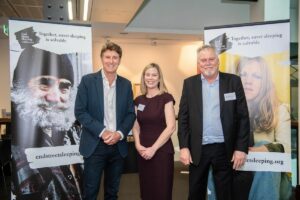Homelessness is a complex problem that the government alone cannot solve. In a diverse and large state like NSW where 129 people are street sleeping, according to the ESSC’s community report in February, tackling a multifaceted and systemic issue like homelessness will require collaborative efforts from different sectors as well as sophisticated technology.
The ESSC is a collective impact project of the NSW Government, Institute of Global Homelessness and leading not-for-profit (NFP) organisations to reduce street sleeping by 50% across NSW by 2025 and eliminate it in the state. Initially scoped for the City of Sydney, one of 14 vanguard cities implementing this methodology globally, in conjunction with the NSW Premier’s Challenge, the initiative has been expanded to the whole of NSW, the only larger-scale implementation in the world. To help achieve the ESSC’s mission, Microsoft and Barhead Solutions were tapped to explore solutions that could use technology to help solve the growing problem of street sleeping.

“Homelessness is a complex social issue that cannot be solved by government alone – that’s why we will be inviting the best and brightest from the frontline and the community to collaborate with us to find new ways of tackling street homelessness.” said Gladys Berejiklian, Former Premier of New South Wales
Removing silos and system gaps
NSW has 128 local government areas, making it challenging for the ESSC to monitor and implement the methodology across multiple communities. A key component of the approach is to understand the profile, background and circumstances of each person who is street sleeping.
Microsoft and Barhead built the app to capture the data required to understand each individual’s story and get them the help and support they need. BNL 2.0 helps the ESSC by connecting the sector, from the smallest agencies to the NSW Government, thus removing silos in different organisations and among service providers. By storing all the details of the client (who is street sleeping) in a centralised database, BNL 2.0 essentially acts as a service coordination and collaboration tool that allows homeless services to have a single view on the person street sleeping. This ensures that their immediate needs are met regardless of which service they attend.

“To help people move out of homelessness, we need to understand their stories first – what are the factors that contributed to their current situation and what’s preventing them from getting stable housing? Only then can we fully understand how to get them the support they need. The ESSC wanted to make this information easily available to caseworkers and service providers, which is why Barhead built a scalable and real-time app built on Microsoft to help the ESSC achieve its mission of lessening the number of rough sleepers in NSW.” said Amanda Stenson, Head of Not for Profit at Barhead Solutions
People fall into homelessness because of a confluence of factors. Street sleepers could be suffering from, gambling, drug and alcohol addiction, chronic health conditions, mental illness, fleeing domestic or family violence or a combination of these issues. For many, it is a re- traumatising event to have to repeatedly tell their stories to different service providers. Using BNL 2.0, multiple organisations can better understand the causes of homelessness and work together to address the root causes of this systemic problem.
“We’re collecting a richer type of information, and it’s a way for us to encourage collaboration across not-for-profit organisations. We’re empowering the sector to act as a single coherent system.” said Stephen Wigney, Technology Lead of the End Street Sleeping Collaboration
On-ground methodology and technology set-up
Frontline staff in homeless services collect information about an individual’s vulnerability and housing needs using the Vulnerability Index & Service Prioritization Decision Assistance Tool (VI-SPDAT), a tool endorsed by the Institute of Global Homelessness. It is used to interview homeless individuals to understand their housing and support needs. ‘Applying this standard measure across the whole population is one of the key parts of the methodology. The BNL 2.0
Lourdes Antenor is an experienced writer who specialises in the not-for-profit sector and its affiliations. She is the content producer for Third Sector News, an online knowledge-based platform for and about the Australian NFP sector.
- Lourdes Antenorhttps://thirdsector.com.au/author/lourdes-antenor/
- Lourdes Antenorhttps://thirdsector.com.au/author/lourdes-antenor/
- Lourdes Antenorhttps://thirdsector.com.au/author/lourdes-antenor/
- Lourdes Antenorhttps://thirdsector.com.au/author/lourdes-antenor/











